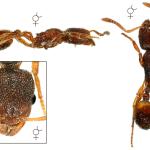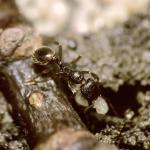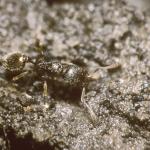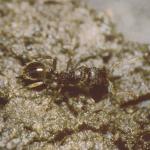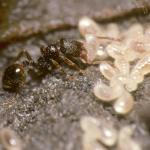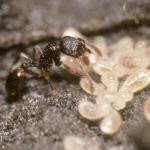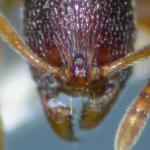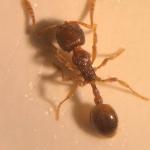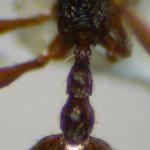Stenamma debile is a small dark reddish-brown myrmicine ant. Workers of the genus Stenamma can easily be distinguished from other myrmicines (ants with both a petiole and post-petiole) by their small size, slow movement, pin-point eyes and long narrow petiole. Up until the 1990s any Stenamma found in the British Isles were recorded as westwoodii or, often, under the misspelling westwoodi. The fact that there are two species of Stenamma in the British Isles was pointed out by Dubois (1993). Stenamma debile is by far the more common species with S. westwoodii sens. str. being much less frequently encountered.
England including the Ilses of Scilly, Wales, Ireland and the Channel Isles. It has not been recorded further north than Gait Burrows, West Lancanshire.
Stenamma debile is found throughout most of Europe.
This species is not regarded as scarce or threatened.
To seperate the two species of Stenamma refer to Dubois (1993 and 1998), Seifert (2007), or Fox (2008).
Most often found in deciduous woods where there is an undisturbed layer of leaf litter. No preference for soil type is apparent.
Alates have most often been taken in late September or October.
Nests are sometimes found under stones or in leaf litter. Colonies are not large, rarely exceeding 100 workers.
Workers forage singly in leaf litter. They scavenge and sometimes predate on small invertebrates.
No data available.
2010


